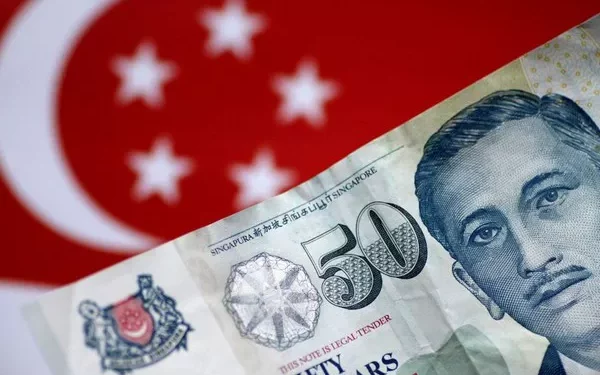In the realm of international finance, exchange rates play a pivotal role in shaping global trade, investment, and economic stability. As currencies fluctuate against each other, individuals and businesses must navigate the complexities of currency conversion to facilitate transactions and manage risks effectively. In this article, we delve into the specifics of converting 20 Singapore Dollars (SGD) to Indian Rupees (INR), exploring the current exchange rate, conversion calculations, factors influencing exchange rates, forecasts, financial advice, legal and tax implications, economic indicators, and the global market impact.
Current Exchange Rate:
As of the latest update, the exchange rate for 1 Singapore Dollar (SGD) stands at approximately 61.22 Indian Rupees (INR). Therefore, converting 20 SGD to INR yields approximately 1224.48 INR.
Conversion Calculation:
To compute the conversion of 20 SGD to INR, one simply multiplies the amount in SGD by the prevailing exchange rate. Mathematically:
Conversion in INR
20 SGD×61.22 INR/SGD=1224.48 INR
Therefore, 20 SGD is equivalent to 1224.48 INR based on the current exchange rate.
Factors Influencing Exchange Rates:
Exchange rates are influenced by a multitude of factors, both macroeconomic and geopolitical in nature. Some key determinants include:
Interest Rates: Disparities in interest rates between countries can attract foreign investment, thereby affecting currency demand and exchange rates.
Inflation Rates: Countries with lower inflation rates generally see an appreciation in their currency value relative to those with higher inflation rates.
Economic Performance: Strong economic indicators such as GDP growth, employment rates, and consumer confidence can bolster a currency’s value.
Political Stability: Political uncertainty or instability can undermine investor confidence and lead to currency depreciation.
Trade Balance: A nation’s trade surplus or deficit influences the supply and demand for its currency in the foreign exchange market.
Forecast and Trends:
Forecasting exchange rate movements with precision is inherently challenging due to the multitude of variables at play. However, analysts often rely on technical analysis, economic indicators, and geopolitical developments to anticipate trends. While past performance does not guarantee future outcomes, historical data and market sentiment can provide valuable insights into potential currency movements.
In recent months, the SGD has exhibited relative stability against the INR, reflecting steady economic growth in Singapore and favorable trade relations with India. However, unforeseen events such as geopolitical tensions or economic shocks can introduce volatility into the currency markets, leading to fluctuations in exchange rates.
Financial Advice:
For individuals or businesses engaging in currency exchange transactions, it is essential to consider the following financial advice:
Timing: Monitor exchange rate movements closely and seize opportunities to convert currencies when rates are favorable.
Diversification: Spread currency holdings across different denominations to mitigate risk and optimize portfolio performance.
Hedging: Utilize financial instruments such as forward contracts or options to hedge against adverse exchange rate movements.
Cost Efficiency: Compare fees and exchange rates offered by different financial institutions to ensure competitive pricing.
Legal and Tax Implications:
Currency exchange transactions may carry legal and tax implications, particularly for cross-border transactions or large-scale investments. It is advisable to consult with legal and tax professionals to ensure compliance with relevant regulations and optimize tax efficiency.
Economic Indicators:
Monitoring key economic indicators can provide valuable insights into currency market dynamics. Some essential indicators to watch include:
Gross Domestic Product (GDP): Measures the overall economic output of a country.
Consumer Price Index (CPI): Gauges inflationary pressures by tracking changes in consumer prices.
Unemployment Rate: Indicates the percentage of the labor force that is unemployed and actively seeking employment.
Interest Rates: Set by central banks to control inflation and stimulate economic activity.
Global Market Impact:
Exchange rate movements reverberate across global financial markets, influencing trade flows, investment decisions, and economic policies. Fluctuations in major currencies such as the SGD and INR can have cascading effects on multinational corporations, commodity prices, and geopolitical dynamics.
For example, a depreciation in the SGD relative to the INR may boost Singapore’s export competitiveness while potentially dampening import demand. Conversely, a strengthening SGD could erode export competitiveness but lower import costs, benefiting consumers and businesses reliant on foreign goods and services.
Conclusion:
In conclusion, the exchange rate between 20 SGD and INR is subject to various economic, financial, and geopolitical factors. While the current exchange rate provides a snapshot of the immediate conversion value, ongoing developments in the global economy can influence future exchange rate movements. By staying informed, exercising prudent financial management, and seeking professional advice when necessary, individuals and businesses can navigate currency exchange transactions effectively and mitigate risks in an ever-evolving financial landscape.
Related Topics:


























